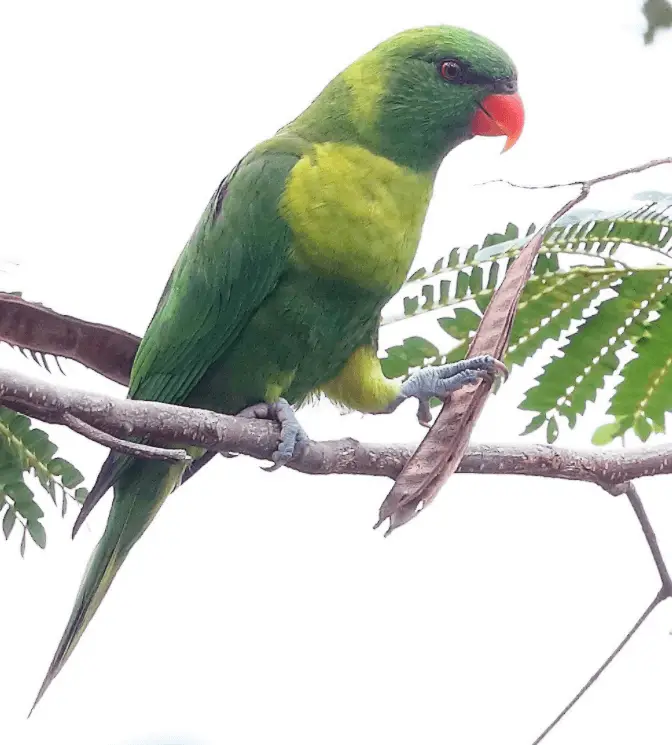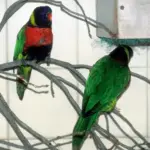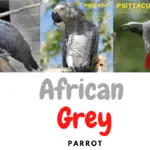
Leaf Lorikeet 25 cm. A fairly small and very green lorikeet, with dark green head marked by glittering green streaking, turquoise-blue on forehead and lores, much paler greenish-yellow breast and hind collar;
in-flight yellowish-green underwing coverts are visible; some birds show slight reddish or yellowish suffusion on breast and thighs.
Sexes alike. No other species on Flores should be confused with this one; T. euteles of Timor and a number of islands to N have an all-yellow rather than green head.
Systematics History
Sometimes thought to be closer to T. euteles. With one exception, has hitherto been treated as a subspecies within the widespread Rainbow Lorikeet T. haematodus complex,
but differs in its rather pale green areas; mid-green belly patch; dark green head with glittering green streaking; small size (smaller than relatively small forsteni; at least 1). Monotypic.
Subspecies
Monotypic.

Leaf Lorikeet
Distribution
Flores.
Habitat
Found in rainforest and casuarinas at elevations up to 1200–1400 m.
Diet and Foraging
Unstudied, but unlikely to be very different from T. haematodus

Leaf Lorikeet
Sounds and Vocal Behavior
Apparently undescribed, but presumably this species is similar to other members of the T. haematodus complex.
Breeding
Only data are the Leaf Lorikeets in breeding condition have been noted in Jun and breeding has been reported Feb–Aug.
Conservation Status

Not globally threatened. Currently considered Near Threatened. CITES II.
Population estimated at 10,000–20,000 individuals and considered to be declining, but no robust and dedicated island-wide surveys have been conducted for theLeaf Lorikeets.
Habitat destruction through combined impacts of firewood collection, commercial logging, timber extraction for construction materials, and clearance for agriculture probably represent the most important threat.
Loss and fragmentation of forests are already extensive on the island, where no semi-evergreen forest below 1000 m is included within gazetted protected areas.
Threats compounded by human population expansion, with large volumes of timber required for housing construction, and little or no governmental enforcement of laws.
Moist deciduous forest is currently being extensively cleared through land grabbing and establishment of agricultural areas, while forest clearance continues in the coastal belt for crops, and illegal logging continues in protected areas.
Presumably trapping for the wild bird trade represents a further threat, although it has not been quantified.




















